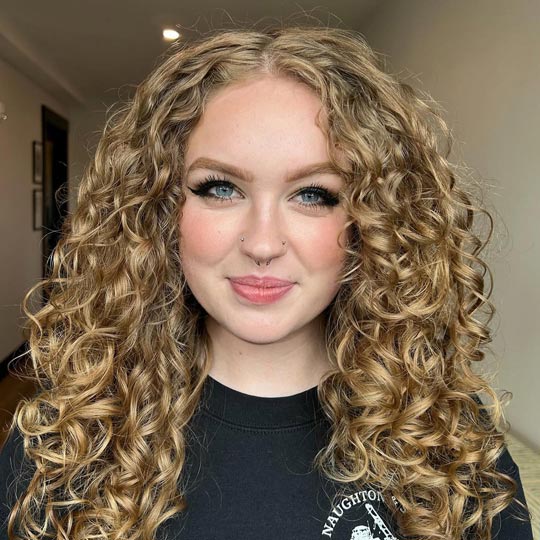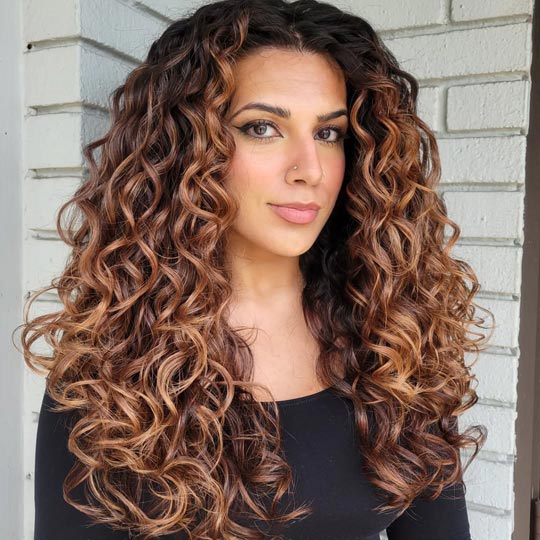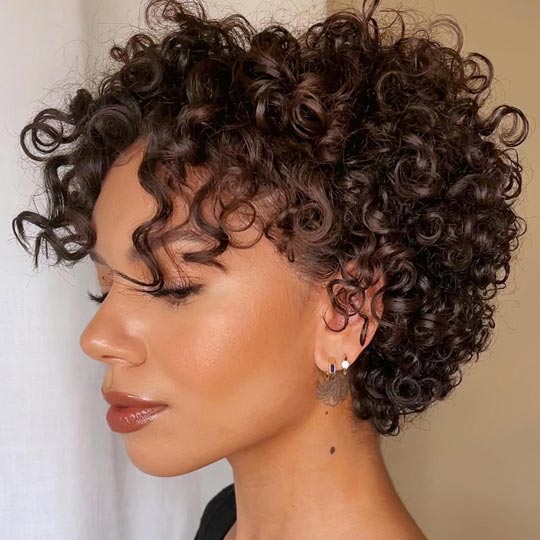What is my curly hair type? and why it is important? It is important to determine what kind of hair type you have. After knowing your hair type, it is easier for you to find out the right products for your hair.
Curly hair type guide
The hair types were created by Andre Walker, an American hairstylist, who is best known for being the personal hairstylist of Oprah Winfrey and for creating Halle Berry’s signature short pixie haircut. There are four different hair types: 1 straight, 2 wavies, 3 curly and 4 kinky. Within each main category, there are three subcategories, a-c, that are based on the diameter of the wave, curl or coil.
- Type 1: Straight Hair
- Type 2: Wavy Hair
- Type 3: Curly Hair
- Type 4: Kinky Hair
Below you can read more information about different hair types and find out, which hair type you have!

Type 1: Straight Hair
Type 1 is straight hair. This type reflects the most sheen and is also the most resilient hair of all of the hair types. It doesn’t get damaged easily and it is extremely difficult to curl this hair texture. Because the sebum (natural oil in the scalp) easily spreads from the scalp to the ends without curls or kinks to interrupt its journey, it is the most oily hair texture of all.

Type 2: Wavy Hair
Type 2 is wavy hair, which has a texture and sheen ranging between straight and curly hair. Due to the high natural movement in the wavy hair, it has the highest prone to frizz and it tends to lose curl definition easily. Wavy has an S-pattern strand, which can be formed throughout the hair or closer to the head depends on the subcategory. While type A waves can easily alternate between straight and curly styles, type B and C Wavy hair is resistant to styling.

Type 3: Curly Hair
Type 3 is curly hair, which includes hair types from loose spiral curls to tight corkscrew curls. The coils are not as tightly packed as in kinky hair and therefore it is more receptive to different styling methods. Curly hair is prone to dryness, breakage and especially to frizziness (climate dependent, humidity = frizz). It needs added moisture to keep the curls well-formed coils and to prevent frizz. Lack of proper care causes less defined curls.

Type 4: Kinky Hair
Type 4 is kinky hair, which is known to be the curliest hair type there is. However, most often there will be no visible curl pattern because the strand tends to form so-called Z-pattern instead of S-pattern. Kinky textured hair is often fragile, dry and with a very high density. Compared to other hair types, type 4 hair often has a short appearance since it is very tightly coiled making it shrink more and by having fewer cuticle layers making it is more susceptible to damage. Kinky hair needs added moisture to avoid the breakage of the hair. With added moisture, you can increase the sebum production and increase hydration.



